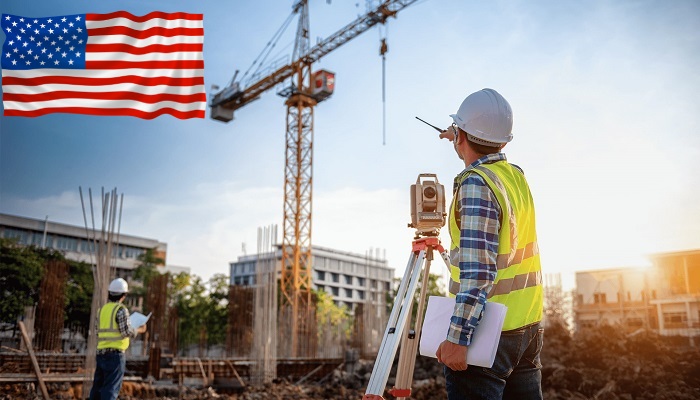As 2024 starts, construction professionals happen to be facing continued inflation, supply chain challenges, heavy cyber threats, as well as project delays.
Although these stress tests can very well spark conflict, builders as well as their lawyers happen to be finding creative ways so as to share the risk and also adapt to this environment.
It is well to be noted that the legal world is shifting rapidly, right from new federal funding mandates to Supreme Court rulings to even state-level indemnity clauses. Listed below are some of the top challenges that construction legal experts happen to be watching this year.
Supply chain snarls and inflation will go on to lead to legal disputes
While COVID-19 is no longer upending supply chains like before, its effects continue to ripple across the industry. Materials disruptions look to stay for now amid issues like geopolitical tensions as well as climate change, and builders are planning accordingly.
One of the ways contractors happen to be dealing with this uncertainty is by way of material escalation clauses, says James Gallagher from one of the New Jersey-based Resolution Management Consultants that goes on to offer dispute resolution as well as project management services to the construction sector.
He says that it is a matter of how much risk the contractor happens to be taking and how much one can recover if something comes up.
Higher prices are bound to lead to more lawsuits
As inflation as well as other factors go on to drive up project costs, contractors along with owners are jockeying with each other so as to distribute risk, says survey from Norton Rose Fulbright’s 2024 Annual Litigation Trends.
Head of construction with Norton Rose Fulbright U.S., Tim Walsh, says that price escalation happens to be causing owners to be stricter with their change order provisions, and the end result is owners going ahead and putting more effort when it comes to enforcing those provisions to stick with original pricing.
One of the key aspects when it comes to supply chain challenges now is inflation, says Gallagher. Contractors try to anticipate the cost of materials months down the line; however, it could very well end up being much higher or even lower than they planned, which may go on to lead to disputes.
He adds that there are varied times when different materials, for varied reasons, become short and hence more costly, and that’s why then, specifically the likes of architects and engineers, will take into account alternative types of products to execute in a project if certain costs surge on one type of material versus the others.
There will be more cases heading to arbitration
It is well to be noted that other forces happen to be at play as well. COVID-19 shut down most of the U.S. court system for almost a year, which went on to create a backlog across many jurisdictions. Gallagher is hoping more clients turn to arbitration rather than just waiting, in some cases, for years since their case winds through the courts.
As per Gallagher, all this has put a little bit stronger of stress on alternative types of litigation systems like mediation and arbitration. The benefit there, according to him, is that parties actually go ahead and work to truly resolve the dispute, not just go through the motions in court.
An affirmative action ruling will go on to create a sense of uncertainty
The 2023 Supreme Court ruling that struck down race-conscious college admissions will most likely have wide-ranging ramifications, right from classrooms to jobsites. In recent months, there are companies that are re-examining diversity, equity, along with inclusion initiatives amid unclear guidance on what is legal or not.
As of now, much of the implications of the ruling remain undefined, which means government workers happen to be doing their best to interpret what it means, opines government contracts group partner Jennifer Flickinger, from one of the construction risk management consultancies.
She further says that any time one leaves something up to the interpretation of an individual, one can get varied results out of the same government agency but varied people. And since it is not defined right now, she thinks that’s what’s causing that stress.
It is well to be noted that for construction, this also goes on to affect minority and disadvantaged business designations that have come under fire by way of a handful of lawsuits that happen to be challenging their constitutionality. Before, a contractor could say that they happened to be a disadvantaged business based simply on race, for instance, but that is not the case anymore. Flickinger, apparently, has seen new applicants that have been denied MWBE status since they did not meet the financial specifications, but has not yet seen a business lose the designation. The overall ramifications of the ruling still remain to be evaluated.
AI, as well as other digital tools, will bring new risk
Construction shall always go on to remain fundamentally physical, but as more aspects of projects go digital, cybersecurity as well as data protection have gone on to become a major dispute area when it comes to organizations, the survey from Norton Rose Fulbright found.
For example, AI happens to be a leading contributor when it comes to cybersecurity exposure, says the survey. The technology’s full legal risks as well as ramifications are not yet clear due to the fact that AI-related claims have not really entered the legal system yet, Gallagher adds.
It is well to be noted that the builders must make sure that they are not stumbling into legal peril by way of data mismanagement. Construction software programs happen to have varying contracts as well as license agreements, for example. These tools can go on to involve sharing data with third-party owners of that software and also contractors and subcontractors who happen to be accessing that software platform so as to upload change orders, lien waivers, and at the same time other project documents.
The fact is that the more and more one moves towards making use of AI tools, contractors and owners must be thinking about incorporating them into their contracts with some kind of provision that talks about the safety and security of the electronic data that gets shared at all times between project participants, Walsh says.




































